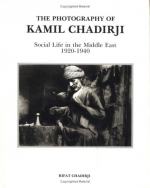|
This section contains 281 words (approx. 1 page at 300 words per page) |

|
The culture of the 1920s was the first to be heavily influenced by mass media, which was still in its infancy. The sounds of radio captured the public imagination in much the same way television did three decades later. While sales of radios totaled only $2 million in 1920, that number would reach $600 million by 1929 as nearly every American bought a "Radiola" for the princely sum of $75.
Programming in many areas consisted of whatever station owners could cobble together from local talent. Variety programs might feature hog callers, traveling accordionists, and ventriloquists. Farm and stock market reports were interspersed with game shows, trite dramas, and programs about hobbies such as stamp collecting, mahjong, and bridge.
In larger cities the parade and subsequent hysteria concerning Lindbergh's solo transatlantic flight filled hours of airtime, as did coverage of fads such as dance marathons and flagpole-sitting contests.
Movies also...
|
This section contains 281 words (approx. 1 page at 300 words per page) |

|




